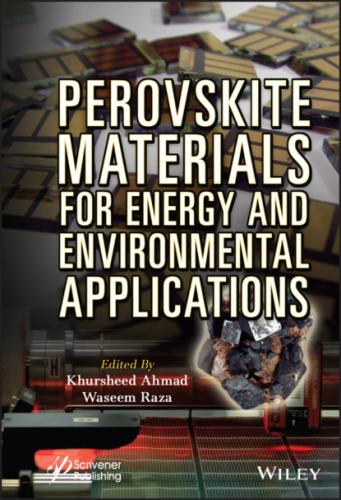Table 2.1 Types of perovskite structures.
| Types of perovskite structure | A | B | X |
| Inorganic oxide perovskite | Divalent ions—Pb2+, Sn2+, Ca2+, Mg2+, etc | Tetravalent metal ions— Ti4+, Sn4+, etc | O |
| Alkali halide perovskite | Monovalent ions— Na+, Li+, etc | Divalent ions— Pb2+, Sn2+, Ca2+, Mg2+, etc | Halogen—Cl−, Br−, I− |
| Organo-metal halide perovskite | Organic cations— methylammonium (CH3NH3) and formamidinium (HC(NH2)2) | Divalent ions—Pb2+, Sn2+, Ca2+, Mg2+, etc | Halogen—Cl−, Br−, I− |
Perovskite has a cubic structure as shown in Figure 2.3. A is situated on the vertex, B is at the center, whereas X is situated at the face center. It is equivalent to an octahedral structure.
A small defect in the lattice decreases the symmetry of a crystal [7]. The perovskite mineral is itself distorted, and because of this distortion, many physical properties, like electronic, magnetic, and dielectric behavior, are impacted. The ideal cubic perovskite structure is not common. It has been reported that if the grain surface of perovskite (CH3NH3PbI3) is chemically modified by spin-coating of 4-ABPACl, butylphosphonic acid 4-ammonium chloride then the efficiency and stability both improve. 4-ABPACl forms crosslink with perovskite by the formation of hydrogen bond between perovskite (CH3NH3PbI3) iodine and –PO(OH)2, –NH3+, as a result, the cohesion force increases between neighboring perovskite grains [8].
Figure 2.3 The crystal structure of the perovskite [6].
2.3 Working Mechanism of PSC
The working principle of the PSC can be understood by the working of the DSSC and organic photovoltaic. In PSC, the perovskite is used as a light sensitizer, the same as dye in DSSC. The three functions performed by PSC are formation of the exciton (electron-hole pair) by the adsorption of the photon, charge transport, and charge extraction. When light falls on the perovskite, excitons are formed. Because of the difference in the binding energy of exciton of perovskite material, free carriers (free electron and hole) are formed from exciton, which can either generate current or can recombine. Because of the low recombination rate of free carriers in perovskite material and high charge mobility, the diffusion distance and lifetime of the carrier are long. And as a result, PSC is able to achieve such a high efficiency. Highly crystalline CH3NH3PbI3 perovskite material is able to achieve charge carrier diffusion length as long as 10 micrometers [9]. As shown in Figure 2.4, the electron is generated in perovskite and then moves to the electron transporting layer (ETL) and finally to the anode. Simultaneously, holes generated in perovskite, move to the hole transporting layer (HTL) and finally to the cathode. The electron migrates to the anode which can be FTO or ITO. The hole migrates to the cathode, which is either Ag or Au [10].
Figure 2.4 Working of the perovskite solar cell [11].
2.4 Device Architecture
Device arrangement is definitely one of the most significant aspects for the performance of the PSC. Depending on the position of the transport layer in the exterior portion, PSC can be classified into two configurations like mesoporous structure and planar structure as depicted in Figure 2.5. These two configurations are further classified into regular (n-i-p) and inverted (p-i-n) as shown in Figure 2.6.
Other two configurations are also possible like ETM-free structure and HTM-free structure, where P-contact is ETM, whereas N-contact is HTM. The brief overview of mesoporous structure and planar structure is discussed further in the chapter.
2.4.1 Mesoporous Structure
A typical n-i-p mesoporous structure is shown in Figure 2.6.a, ETM is on the exterior portion. The first arrangement of the PSC to be tested was a conventional n-i-p mesoporous structure in which the light-harvesting dye was replaced by the lead halide perovskite materials (CH3NH3PbBr3 and CH3NH3PbI3 ) in a traditional DSSC [3]. Mesoporous structure of PSC is widely used because of its high porosity and high surface area. As shown in Figure 2.6.a, the mesoporous n-i-p PSC consists of FTO, ETM, a mesoporous layer of metal oxide, perovskite layer, HTM, and an electrode layer. In mesoporous p-i-n PSC, the HTM layer is on the exterior portion as shown in Figure 2.6.b. The perovskite material adheres to the mesoporous structure to increase the light-absorbing area of perovskite, which results in increased efficiency. The mesoporous structure results in efficient crystallization of perovskite and electron injection [9]. There is a depletion region at the TiO2 side of the TiO2/MAPbI3 interface, which provides contribution in separation of photogenerated charge carriers and hence it results in high performance of TiO2-based cells [14]. TiO2 mesoporous layer helps to transport the electrons, block holes, and inhibit the recombination of the electron and hole pair. The electron diffusion length and recombination lifetime is governed by the mesoporous layer of TiO2 and hence is not varied by perovskite composition [15].
Figure 2.5 Depiction of two main types of PSC [12].
Figure 2.6 Schematic diagram of four types of perovskite solar cell. (a) n-i-p mesoporous structure, (b) p-i-n mesoporous structure, (c) n-i-p planar
